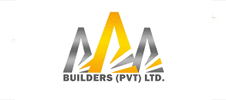Termite infestations are among the most destructive threats to buildings, causing billions of dollars in damage globally each year. To counteract this, Damp Proof Course (DPC) termite barriers provide a dual-purpose solution—preventing termite entry and protecting against rising dampness that can compromise structural integrity. This article explores every critical aspect of DPC termite barriers, ensuring comprehensive understanding and practical insights.
What Are DPC Termite Barriers?
A DPC termite barrier is a layer of specially designed material installed at strategic points in a building’s structure to prevent termites from penetrating and causing damage. By combining damp-proofing and termite deterrence, these barriers are essential for ensuring long-term structural health, particularly in termite-prone regions.
Key Features of DPC Termite Barriers
| Aspect | Details |
|---|---|
| Purpose | Blocks termite pathways and prevents moisture ingress |
| Common Materials | HDPE sheeting, metal barriers, chemical-treated membranes, composite layers |
| Installation Timing | During construction or as part of retrofitting |
| Lifespan | 50+ years with proper installation and maintenance |
| Compliance Standards | Australian AS 3660.1-2014, local codes in the US, UK, and other regions |
| Effectiveness | High when combined with integrated pest management (IPM) |
Materials Used in DPC Termite Barriers
DPC termite barriers are made from durable materials designed to block termites and resist moisture. Common options include plastic sheeting like HDPE, known for its flexibility and cost-effectiveness, and metal barriers crafted from stainless or galvanized steel for robust, long-lasting protection.
Additionally, chemical-treated sheets infused with termiticides provide dual protection by deterring termites chemically and physically. Advanced composite barriers combine plastic and chemical layers for enhanced performance, making them ideal for high-risk termite zones.
Each material is selected based on its durability, effectiveness, and suitability for specific construction needs.

Plastic Barriers (HDPE and PVC Sheeting)
- Description: High-density polyethylene (HDPE) or polyvinyl chloride (PVC) sheets are flexible, durable, and cost-effective.
- Advantages:
- Lightweight and easy to handle.
- Resistant to UV radiation and chemicals.
- Compatible with various construction types.
Metal Barriers
- Description: Typically made from stainless steel or galvanized steel, metal barriers are robust and durable.
- Advantages:
- Long-lasting and impervious to termite penetration.
- Provides additional strength to structural joints.
- Disadvantages:
- More expensive than other options.
- Requires precision installation to prevent gaps.
Chemical-Treated Sheets
- Description: These barriers are infused with termiticides, creating a chemical and physical barrier.
- Advantages:
- Effective at deterring termites.
- Combines physical and chemical protection.
- Considerations:
- Requires careful handling to avoid contamination.
Composite Barriers
- Description: A combination of HDPE layers and chemical treatments for enhanced termite resistance.
- Advantages:
- Superior performance in high-risk termite zones.
- Provides long-term protection with minimal maintenance.
Installation Techniques for DPC Termite Barriers
Proper installation of DPC termite barriers is crucial for preventing termite entry and moisture ingress. The process involves placing the barrier between the foundation and structural walls during construction, ensuring a continuous, gap-free layer.
Key techniques include cleaning and leveling the foundation surface, overlapping sheets by at least 150 mm, and sealing joints with adhesives or heat welding. Localized barriers or chemical treatments may be used in vulnerable areas for retrofitting.
Precision and professional expertise during installation ensure long-lasting protection against termites and dampness.

Pre-Construction Installation
Pre-construction is the ideal time for installing DPC termite barriers, ensuring seamless integration with the foundation.
Steps:
- Foundation Preparation: Level and clean the surface where the DPC will be laid.
- Material Placement: Place the barrier between the foundation and the wall structure.
- Sealing Joints: Overlap materials by at least 150 mm, sealing them with adhesives or heat welding.
- Inspection: Ensure continuous coverage with no gaps or breaches.
Post-Construction Retrofitting
Retrofitting is possible for existing buildings, particularly in areas where termite activity is detected.
Techniques:
- Localized Physical Barriers: Metal or treated membranes can be added around vulnerable points.
- Chemical Barriers: Drilling and injecting termiticide into the ground or walls.
Integration with Building Features
- DPC barriers should align with plumbing, electrical conduits, and ventilation systems to avoid compromises.
- Where pipes penetrate the barrier, seal the area with collars or specialized adhesives.
Benefits of DPC Termite Barriers
| Benefit | Explanation |
|---|---|
| Structural Integrity | Prevents damage to load-bearing components. |
| Moisture Control | Blocks rising damp that can degrade materials. |
| Cost Savings | Reduces the need for repairs and repeated pest control treatments. |
| Environmental Protection | Chemical barriers reduce the need for excessive pesticide use. |
| Regulatory Compliance | Meets building codes and insurance requirements. |
Challenges in Using DPC Termite Barriers
While DPC termite barriers are highly effective, they come with specific challenges. Improper installation, such as inadequate overlaps or poorly sealed joints, can create gaps that termites can exploit. Over time, environmental factors like UV exposure, moisture, or physical wear can degrade certain materials, reducing their effectiveness.
Additionally, retrofitting barriers in existing structures can be complex and costly, requiring careful planning and integration with other termite management systems.
Addressing these challenges requires skilled installation, regular maintenance, and the use of high-quality, durable materials to ensure long-term performance.

Improper Installation
- Issue: Poorly sealed joints or inadequate overlap can leave gaps for termites.
- Solution: Employ experienced installers and conduct thorough inspections during the construction process.
Material Degradation
- Issue: Over time, UV exposure or environmental stressors can weaken some materials.
- Solution: Use UV-stabilized, high-quality materials and schedule periodic inspections.
Incompatibility with Retrofitting
- Issue: Retrofitting barriers in existing structures can be complex and costly.
- Solution: Combine retrofitting with other pest control methods, such as baiting systems or soil treatments.
Maintenance of DPC Termite Barriers
| Task | Frequency | Purpose |
|---|---|---|
| Visual Inspections | Annual | Check for visible wear, damage, or breaches. |
| Termite Monitoring | Quarterly | Ensure termite activity is not bypassing the barrier. |
| Professional Assessments | Every 3-5 years | Comprehensive evaluation of the barrier’s integrity and effectiveness. |
| Repairs | As needed | Fix cracks, gaps, or damaged sections promptly. |
Best Practices for Optimal Termite Control
Achieving effective termite control requires a multi-layered approach that combines physical barriers like DPC termite barriers, chemical treatments, and regular inspections. Install high-quality DPC barriers during construction to block termite access and prevent rising dampness. Complement this with soil treatments and termite baiting systems to target colonies directly.
Regular inspections by pest control professionals are essential to detect and address vulnerabilities early. Using certified materials and collaborating with experienced technicians ensures long-lasting, reliable protection against termite infestations.
Combine Strategies
While DPC barriers are effective, they work best as part of an integrated termite management plan, which includes:
- Soil Treatments: Pre-treat soil with termiticides before construction.
- Baiting Systems: Install bait stations to monitor and control termite activity.
- Regular Inspections: Stay vigilant to detect early signs of termite presence.
Use Certified Products
Ensure all materials meet local and international standards, such as:
- AS 3660.1-2014 for termite management in Australian buildings.
- Local codes in the US (International Building Code) and UK.
Engage Professionals
Collaborate with certified pest control experts and construction teams experienced in termite management.
Key Insights from DPC Termite Barrier Applications
| Insight | Explanation |
|---|---|
| Integrated Pest Control | Barriers are most effective when combined with other termite management tools. |
| Cost-Effectiveness | High upfront costs are outweighed by long-term savings on repairs and treatments. |
| Customization | Choose materials and methods based on local termite risks and environmental conditions. |
Conclusion:
DPC termite barriers are a critical investment in the longevity and safety of your building. By blocking termite entry and preventing moisture damage, these barriers play a foundational role in maintaining structural integrity. When installed correctly and combined with comprehensive termite management, they offer unparalleled protection against one of the most destructive pests.
Frequently Asked Questions
What is a DPC termite barrier?
A DPC termite barrier is a protective layer installed in buildings to block termites and prevent moisture from rising through the foundation.
What materials are commonly used for DPC termite barriers?
Common materials include HDPE plastic sheeting, stainless steel sheets, chemical-treated membranes, and composite barriers.
Can DPC termite barriers be installed in existing buildings?
Retrofitting is possible using localized physical barriers or chemical treatments, but it’s more effective when installed during construction.
How long does a DPC termite barrier last?
A DPC termite barrier can last over 50 years when properly installed and maintained.
Do DPC termite barriers require maintenance?
DPC termite barriers are low maintenance, but periodic inspections are recommended to ensure they remain intact and effective.
Protecting your home from termites is essential to avoid costly repairs and ensure structural integrity. One of the most effective methods is using Damp Proof Course (DPC) termite barriers, which prevent termites from accessing your home while also blocking rising damp. These barriers, made from materials like HDPE sheeting or chemical-treated membranes, are installed during construction or retrofitted in existing buildings.
For optimal results, combine DPC barriers with comprehensive termite control strategies like soil treatments and baiting systems. Regular inspections by pest control experts are also crucial to maintaining a termite-free environment.
If you’re looking for professional termite treatment solutions tailored to your home, check out Termite Treatment at Home. Their expertise in termite control ensures your property stays protected for years to come. Don’t wait for damage—take proactive measures today!
Credit Website: www.secp.gov.pk







